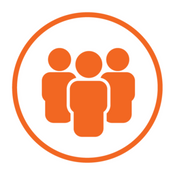Integrating UX Design into a DSDM Project
Insight
This paper explores the difficulty of integrating user experience (UX) design work within agile projects, given the unique processes and working practices of UX designers. It focuses on what happened when a software development company using an agile project management approach engaged an external agency to do the UX design work remotely from its own offices.
Summary
Integrating user experience (UX) design into agile working is a challenge faced by many agile teams, not just those using DSDM. Although the work of UX designers and developers complements each other, the different goals, processes and working practices of developers and UX designers pose challenges in practice.
This white paper presents a chapter from the story of one organization’s journey to integrate UX design into the DSDM framework. It describes the difficulties they faced, working practices adopted and the lessons learned from their experiences of integrating UX designers into their DSDM agile process.
LShift is a hi-tech software development company that works across a broad range of industries, languages and platforms. They are probably best known for creating RabbitMQ. They faced four main challenges while integrating UX design into the DSDM framework:
- Communication between developers and UX designers: what is the relevant information that needs to be communicated, how to best communicate it, how to keep communication channels open and how to keep the emerging design implementation visible for feedback. Difficulties in these areas can cause frustration, problems with the technical feasibility of design solutions and mistaken expectations by the client.
- Level of precision in upfront design: developers suggested five main reasons why “less is more” when it comes to design documentation ready for the start of developer involvement: prioritisation and de-scoping can lead to a waste of pixel perfect designs; some design issues will only be found once you start implementing; pixel perfect designs may increase resistance to making design changes; it is better to focus on functionality first and design as you go along; quality of designs can benefit from early input by developers.
- Design documentation: the amount and detail of documentation needs to be discussed early on so that it meets both developers’ and designers’ requirements.
- User testing: user testing can be a challenge in a product development setting if the business does not have customers yet. This can be addressed using personas and user representatives.
Several suggestions that would be compatible with LShift’s situation and would ameliorate these difficulties, were identified from existing literature and discussed with LShift management. Some of these have been adopted.
Two roles in particular are relevant: an extended Business Analyst (BA) role and a hybrid Project Manager (PM). Communication problems arising between designers and developers can be overcome through a technically knowledgeable BA who acts as a bridge between the two disciplines, supported by a PM with both technical and design experience.
Visibility and transparency of the work by both designers and developers was increased by involving developers in design and designers in development: the same designer attending all daily stand-ups; all designers and developers having access to all current stories; and releasing the implemented design to designers once a week.
In this case study, subject matter experts delivered each area of the system, so there was no shortage of expertise. The main surprise was how quickly the shared understanding developed in the Feasibility and Foundations stage was lost once the teams started development.







